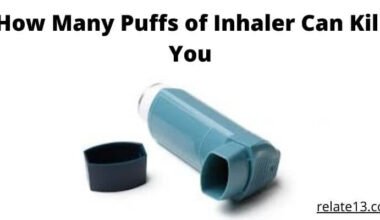Yes, it is possible to die in your sleep from anaphylaxis if you have a severe allergic reaction while sleeping and don’t receive prompt medical attention. Anaphylaxis is a serious and potentially life-threatening allergic reaction that can cause your airway to narrow and your blood pressure to drop rapidly, making it difficult to breathe and potentially leading to shock and cardiac arrest.
But there’s a special medicine that can help if someone has anaphylaxis. It’s called an epinephrine auto-injector, or “epi-pen” for short. It’s a little shot that goes into their leg and helps their body stop the allergic reaction. If someone has an epi-pen with them and uses it quickly when they feel an allergic reaction, it can save their life.
That’s why it’s important for people who have severe allergies to always have an epi-pen with them and to know how to use it. It’s also important for them to tell their friends, family, and caregivers about their allergies so they can help if they need it.
With the right preparation and care, someone with severe allergies can stay safe and healthy. So if you or someone you know has severe allergies, make sure to talk to a doctor about getting an epi-pen and learning how to use it.
What is Anaphylaxis?
Anaphylaxis is an extreme and rapid allergic reaction triggered by exposure to an allergen, which can include certain foods, medications, insect stings, or latex.
When a susceptible individual encounters the allergen, their immune system releases an excessive amount of chemicals like histamine, leading to a cascade of symptoms throughout the body.
What are the symptoms of anaphylaxis death?
Anaphylaxis reaction triggers the body’s immune system. There can be many symptoms so you can recognize this allergy.
- Feeling lightheaded or unconsciousness
- Swelling on the face, eyes, lips, and throat.
- A weak and rapid pulse.
- Runny nose, vomiting, and diarrhea.
- Itchy skin, hives, skin color change, and many skin reactions.
- Breathing problem.
- Difficulty breathing or shortness of breath
- Swelling of the face, lips, tongue, or throat
- Nausea, vomiting, or diarrhea
- Hives or rash
Can anaphylaxis happen slowly?
It is a whole-body allergic reaction that increases in 1/2 hour or longer. But you can delay it for hours with some prevention. If it is not treated immediately, it may lead to death. This reaction causes blood vessels to leak fluid into tissues and organs causing high blood pressure.
What is the cause of anaphylaxis?
There are many causes of anaphylaxis allergy, which can be food allergies, insect stings, bites, medication, etc. Also, there is no way that it will happen slowly.
Children and teenagers mostly show food allergies to common triggers such as peanuts, seafood, tree nuts, soy, sesame, and milk. Food allergies are the most common in this age group.
If someone has had a mild anaphylaxis reaction in the past, it might be possible for more severe anaphylaxis after another exposure to the allergy.
Some people have anaphylaxis from aerobic exercises such as running and less intense physical activity such as walking. Eating a small amount of food before exercising when the weather is hot, cold, or humid is also linked to anaphylaxis.
In some cases, the cause of anaphylaxis can’t be identified but you need to take a test that can help the allergen.
How long does it take to die from anaphylaxis?
It may take up to 1 or 2 hours and 12 hours to die. It totally depends on the treatment of the patient. First, you need to observe the symptoms.
Suppose you have mild symptoms like a runny nose, itchy or red eyes, and sneezing. It also includes skin reactions like mouth and throat swelling and irritation. If you have these symptoms then consult a doctor quickly.
To avoid these reactions, clean your whole body, clean your room and your things. Wash hands and disinfect them after or before eating.
Take healthy food only and exercise daily but avoid running as it may cause a breathing problem. Just take a light exercise to take out toxins from your body.
How can I die in sleep from anaphylaxis?
Anaphylaxis is a life-threatening allergy reaction. If not treated in time then you may die. Anaphylaxis shock is rare if your immune system is not working, and other allergy causes so you can die in sleep from anaphylaxis.
The immune system overreacts to allergies and releases a large amount of Histamine and other chemicals into blood cells.
These chemicals are causing blood vessels to constrict, which highly reduces your blood flow, thus your blood pressure going too low so it is difficult to take a breath because your blood might not reach your organs such as the lungs and heart so you may die and it can happen while you are sleeping or waking.
Treatment for anaphylaxis
Treatment for anaphylaxis is a medical emergency and requires immediate action. The best possible treatment for anaphylaxis involves a combination of steps to address the severe allergic reaction and stabilize the individual’s condition. If you suspect someone is experiencing anaphylaxis or you are experiencing it yourself, follow these essential steps:
1. Administer Epinephrine (Adrenaline):
- If the person experiencing anaphylaxis has an epinephrine auto-injector (EpiPen) prescribed by their doctor, use it immediately. The EpiPen is designed for easy and quick self-administration.
- Inject the epinephrine into the person’s outer thigh, even through clothing, and hold it in place for about 10 seconds to ensure the full dose is delivered.
- Epinephrine helps to constrict blood vessels, relax the airways, and counteract the severe allergic response.
2. Place the Person in a Comfortable Position:
Lay the person flat on their back and elevate their legs if possible. This helps improve blood flow and circulation.
3. Loosen Tight Clothing:
Loosen any tight clothing, particularly around the neck, to help with breathing and blood flow.
4. Administer Additional Medications:
- Antihistamines: If available and recommended by a healthcare professional, administer an oral antihistamine, such as diphenhydramine (Benadryl), to help counteract histamine release and reduce allergic symptoms.
- Glucocorticoids: In some cases, healthcare providers may administer glucocorticoids, such as prednisone, to help reduce inflammation and prevent a potential late-phase allergic response.
5. Provide Oxygen and Support Breathing:
- If available, administer oxygen to help the person breathe more easily.
- If the person is having difficulty breathing, consider using a bag-valve-mask device to provide assisted ventilation.
6. Monitor Vital Signs:
Continuously monitor the person’s heart rate, blood pressure, and respiratory rate to assess their condition.
7. Prepare for Anaphylaxis Reversal:
- Be prepared to administer a second dose of epinephrine if the person’s symptoms do not improve or worsen after the initial dose.
- Some individuals may require additional doses of epinephrine or other medications, depending on the severity and duration of the reaction.
8. Call for Emergency Help:
Dial emergency services or local medical assistance immediately. Time is critical in treating anaphylaxis, so do not delay seeking help.
9. Transport to the Hospital:
- Even if the person’s symptoms appear to be improving after the administration of epinephrine, they still need to be transported to the hospital for further evaluation and observation.
- Anaphylaxis can have a biphasic or delayed reaction, which means symptoms may recur or worsen after an initial improvement.
Remember, anaphylaxis is a life-threatening emergency that requires immediate medical attention. The best course of action is to always call for professional help and administer epinephrine if available. Timely treatment significantly improves the chances of a positive outcome for the person experiencing anaphylaxis.
Minimizing the Risk of Anaphylaxis during Sleep
Prevention and preparedness are key to minimizing the risk of anaphylaxis, even during sleep. Here are some important steps to consider:
1. Know Your Triggers: If you have a history of allergies, work closely with an allergist to identify specific triggers and avoid exposure to them as much as possible.
2. Carry Medication: Individuals at risk of anaphylaxis should always carry an epinephrine auto-injector (EpiPen) prescribed by their healthcare provider. This emergency medication can be a life-saver and should be used at the first sign of anaphylaxis.
3. Inform Roommates or Family Members: If you have a history of severe allergies, inform those you live with about your condition, so they can recognize the symptoms and take appropriate action if necessary.
4. Wear Medical Alert Identification: Wearing a medical alert bracelet or necklace that indicates your allergies can be vital in case of an emergency, even during sleep.
5. Seek Immediate Medical Attention: If you suspect you are experiencing anaphylaxis or witness someone else experiencing it during sleep or at any other time, call emergency services immediately.
You may also like:
- Botox Treatment: Benefits and side effects
- Why should you add radish to your diet
- Do I need motivation for the GYM
FAQ’s
How quickly can anaphylaxis cause death?
Anaphylaxis is a sudden and severe allergic reaction that occurs within minutes. Immediately treatment is necessary for this situation. If anaphylaxis gets worse it may lead to death in 10 minutes.
What are the chances of surviving anaphylaxis?
There is a 1% chance of surviving if you take precautions immediately. If you have been hospitalized then a 0.1% chance of emergency department attendance for anaphylaxis has a fatal outcome.
Can you survive an anaphylaxis attack?
You need to take immediate treatment and be hospitalized in an emergency. Your recovery will depend on how quickly you recover and get up. So work with your doctor to come up and be confident.
How long does it take for anaphylaxis to be fatal?
Anaphylaxis can be life-threatening and, if left untreated, can lead to death within minutes to hours.
How does anaphylaxis allergy cause the throat?
- Your throat is swollen or closed.
- You have a lump in your throat.
- Your throat is sore and burns.
- You need to swallow often.
Your throat is closed and you can’t breathe then?
- First, you should not panic, you need to calm down.
- Drink a small sip of water.
- Apply pressure behind your earlobes and try to take a deep breath.
What are the 4 stages of anaphylaxis?
The four stages of anaphylaxis are:
- Onset: Initial symptoms such as itching, hives, and swelling may appear.
- Acute: Symptoms worsen rapidly and can include difficulty breathing low blood pressure, and gastrointestinal issues.
- Peak: Severe symptoms reach their maximum intensity, and the person may experience respiratory distress and cardiovascular collapse.
- Resolution: Symptoms start to subside, but medical attention and monitoring are still necessary due to the risk of a delayed reaction.
Final words
Let’s wrap up this discussion to review what we’ve learned about anaphylaxis. It’s a dangerous disorder that even when you’re asleep could have life-threatening effects. Anaphylaxis signs should always be kept in mind, and immediate action should always be taken in an emergency.
It’s critical to keep an epinephrine auto-injector on hand at all times if you have a history of having severe allergic responses and to make others aware of your allergy. You may significantly lower the risk of anaphylaxis by adopting these easy steps, ensuring your safety.
While the possibility of dying in sleep from anaphylaxis is low, it is essential to understand the severity of this allergic reaction and take necessary precautions.
Knowing your triggers, carrying emergency medication, and communicating your condition with others can significantly reduce the risk of fatality and ensure timely intervention in case of an anaphylactic reaction. Always prioritize your safety and seek professional medical advice if you have concerns about allergies or anaphylaxis.






